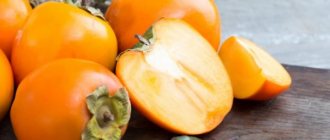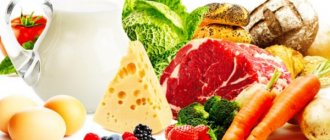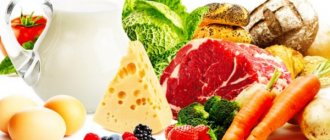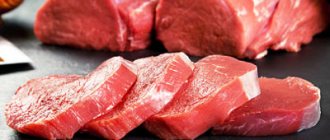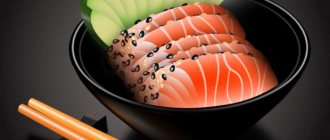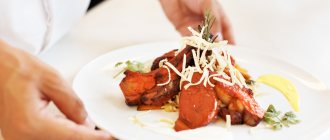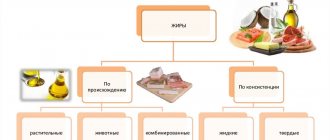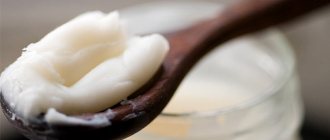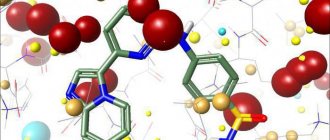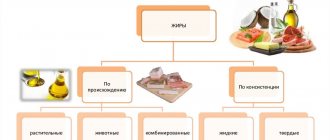How many calories are in different varieties of persimmon and is it possible to gain weight by eating the fruit daily? The beneficial properties of persimmon, composition and glycemic index allow the fruit to easily displace other products that have dietary properties from the list of low-calorie foods. A diet that includes this fruit is especially effective for accelerated weight loss and does not cause harm to health.
CALCULATORS FOR THOSE WHO WANT TO LOSE WEIGHT
Kinds
Persimmons (the calorie content of a weight loss product is given below in the article) are divided into tart and non-tart types depending on their origin. Tart ones have a soft, jelly-like consistency, astringent until ripening due to the large amount of tannin they contain. Such fruits are used as food and used in making jam and preserves.
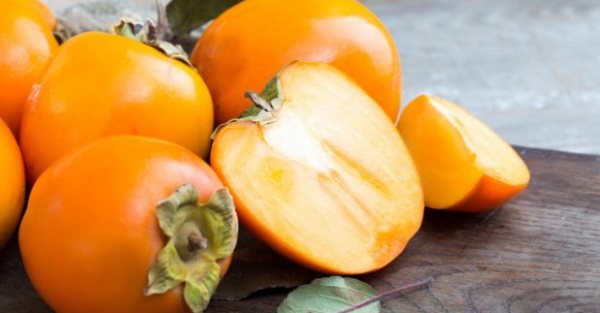
Impatient - characterized by high density, elasticity and are suitable for preparing salads and dried fruits.
There are 6 varieties of persimmon:
- Kinglet. The most popular variety, characterized by light orange or dark brown flesh and the presence of seeds. The color of the seeds changes immediately after pollination and signifies the acquisition of softness and maturity of the fruit.
- Chocolate girl. A wren-like variety with a thin skin and a pleasant yellow or chocolate-colored pulp. The weight of one fruit is 250 g. There are grains inside. The variety withstands temperature changes well.
- Fig or chamomile. An early, fig-like variety with a small, flower-like shape. The flesh of the fruit is dark, the peel is yellow-orange or dark orange. It has a high sucrose content.
- Honey. The shape of the fruit is similar to a tangerine, has a sugary sweetish taste of the pulp and a thick peel. It contains a lot of fruit sugar, acquiring, after ripening, a jelly-like structure, which makes transportation very difficult.
- Bull's Heart . The fruits are distinguished by their very large size, tomato-like shape and moderate viscosity. The peel of the fruit is thin and very soft, which makes it very difficult to transport. A distinctive feature is also a delicate, less sweetish taste than other varieties.
- Sharon . A variety created by crossing a persimmon with an apple. It has a small shape and a dense structure, even after ripening. The peel of the fruit is rich yellow or orange. The pulp is light, non-astringent and seedless.
- Persimon . Oriental, very sweet variety, sourced from a subtropical climate. It has a dark orange color, a dense, non-jelly structure and a pleasant, very sweet pulp without viscosity.
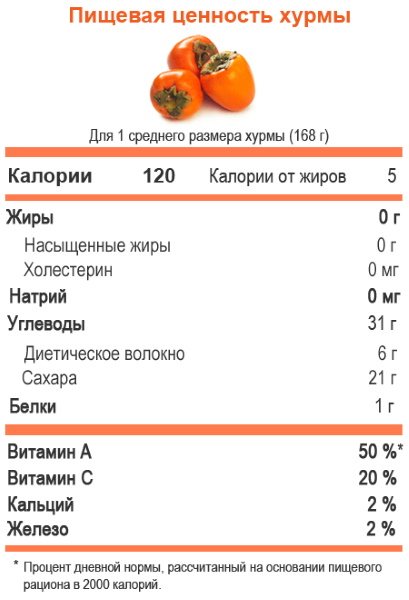
Calorie content and BJU indicators. The energy value of the fruit also varies depending on the variety.
| Variety | Calorie content |
| Kinglet | 76 kcal (66 per 100 g.) |
| Chocolate girl | 112 kcal (67 per 100 g) |
| Sharon | 135 kcal (69 per 100 g) |
| Bull's heart | 235 kcal (68 per 100 g) |
| Honey | 242 kcal (67 per 100 g) |
| Fig | 263 kcal (72 per 100 g) |
| Kaki | 302 kcal (67 per 100 g.) |
How to choose and use?
It is recommended to eat any of the varieties fresh to get maximum health benefits. If this is not possible, you can dry thinly sliced slices and store them in a dark, dry place. Dried persimmon contains a large amount of calories - about 270 kcal per 100 grams. This makes the product prohibited for people with severe obesity.
It is difficult to prepare dried persimmons at home. But you can try cutting it into thick pieces and putting it in the oven, preheated to a temperature of +50-60 degrees. 1 hour is enough to dry the fruit.
It is allowed to freeze and preserve persimmons in their entirety. Frozen fruits retain the benefits of a fresh product. The hot method of canning destroys the vitamins and microelements contained in them.
Jam is especially valuable because it is sweet and does not require the addition of large amounts of sugar. It is recommended to prepare it from “honey” persimmon, “king” or “chamomile”. Due to its high calorie content - 305 kcal per 100 g - it is not recommended to be consumed if you are overweight.
The juice from the fruit is quite sweet, and you won’t be able to drink a large volume. It is recommended to consume it in moderation, using a straw, as the high sugar content can trigger the development of caries.
When choosing persimmons, you should pay attention to the integrity of the fruit and its peel. You should not buy damaged fruits with dark spots or other damage. The peel should be shiny and easily pressed when pressed. This indicates the ripeness of the persimmon. The exception is the “apple” variety, whose fruit is hard even when ripe.
Calorie content, BJU, GI
Calorie content 100 gr. persimmon is about 66-67 kcal, which allows it to be used as a basis for a mono-diet. The weight of the fruit ranges from 40 to 900 g depending on the variety, but the average figures are about 200-400 g. The size of the fruit can reach up to 10 cm in diameter and varies depending on the variety.
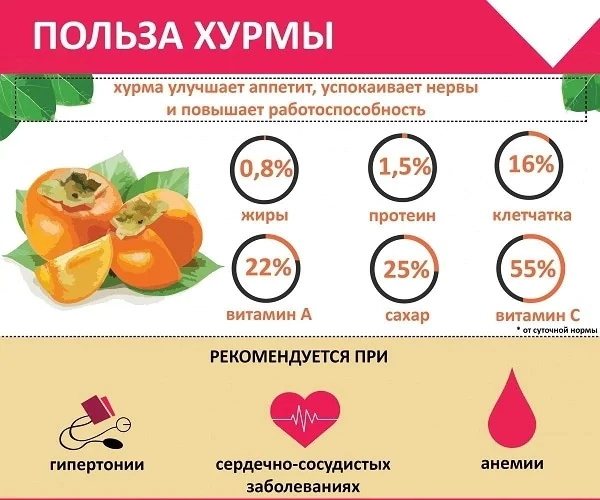
Chemical composition:
| Name | Quantity |
| Squirrels | 0.5 gr. |
| Fats | 0.4 gr. |
| Carbohydrates | 16.2 gr. |
| Alimentary fiber | 1.7 gr. |
| Water | 83 gr. |
| Hypoglycemic index | 45-50 (average) |
In addition to fresh fruits, you can eat dried or dried persimmons. The “food of the gods” prepared in this way is most often used for compotes or baked goods.
Dried persimmon tastes like figs and is obtained by drying the seedless fruit cut into slices at a temperature of + 45 degrees. The calorie content of such persimmons is only 94 kcal per piece. A distinctive feature of dried fruits is a bright white, indelible coating that appears when sucrose is released during drying.
You can prepare dried persimmon yourself by cutting the fruit into pieces and drying it in the oven for 1-2 hours. This fruit is added to pies or salads and contains only 84 kcal per piece.
Energy value:
| Type of persimmon | Calorie content |
| Dried persimmon | 93 kcal (235 per 100 g) |
| Dried persimmon | 84 kcal (246 per 100 g) |
Description
In total, there are over seven hundred species in the Persimmon genus, among which are those from which all the varieties that are grown today in gardens are derived. The flowering is usually yellow, modest but elegant, without a strong aroma. Theoretically, a tree under favorable conditions can live up to five hundred years. And it is noteworthy that from the point of view of botanists, this is not a fruit at all, but a berry. The weight of the fruit varies from 50 g to 700 g, and their shape also varies - from round to almost square, from heart-shaped to flattened. And there are no strict standards in color - everything varies between yellow-orange, red and dark brown. Behind the thin, delicate skin, which does not require peeling to eat the fruit, lies fibrous, juicy pulp. The fruit contains seeds, which are usually thrown away.
Story
Man began to transform wild persimmons into garden ones at least 3,200 years ago. It is known that it was part of the obligatory tribute from the provinces in some countries of the Ancient World. Persimmon was considered a rare fruit, worthy of the table of the nobility, in Japan. It was highly valued in all Asian countries, sometimes affectionately called “Chinese peach.”
It is known that in Italy in the 70s of the 19th century, many farmers preferred to free up their vineyards that once had an ancient history for orchards with persimmons. But the real heyday of the popularity of this berry occurred in the second half of the 20th century, which is associated with such a simple phenomenon as fast and cheap transportation of fruits from their place of growth to the final consumer, which has finally become accessible to everyone.
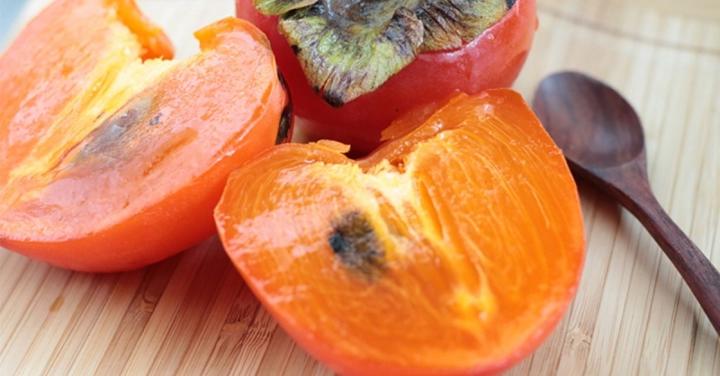
Compound
The nutritional value of fresh fruits is as follows:
- 0.5 g proteins;
- 0.4 g fat;
- 15.2 g carbohydrates.
Persimmons have one of the highest levels of insoluble dietary fiber (fiber) among fruits. Sugars are absorbed much easier than from fruits with similar levels of sugar content (bananas, plums).
The fruit, both dried and fresh, is rich in minerals, including:
- potassium - 199 mg;
- magnesium - 55 mg;
- phosphorus - 42 mg;
- sodium 14 mg;
- iron - 3 mg.
And in terms of calcium content - 127 mg, persimmon is even superior to milk, so it is ideal for a healthy diet. Of the vitamins, it is especially worth noting ascorbic acid, group B, E and beta-carotene. And it is impossible to ignore tannins, the very substances that underlie the extraordinary “astringent” properties of this fruit.
Varieties
There are about two thousand varieties of this fruit in the world. But among them there are several special ones that are especially loved by both gardeners and gourmets. These are, for example, king varieties, distinguished by brown shades in addition to red, but most importantly, by the complete absence of an “astringent effect.” This group includes the varieties Gately, Zenji-Maru and Hyakume. The Sharon variety, which is a hybrid of apple and Japanese persimmon, deserves special attention. It not only has a wonderful taste, but also an aroma that has something apricot in it. Varieties of eastern persimmon are considered especially juicy and honey-sweet, these are Tsuru-Noko, Jiro and Gosho-Gaki.
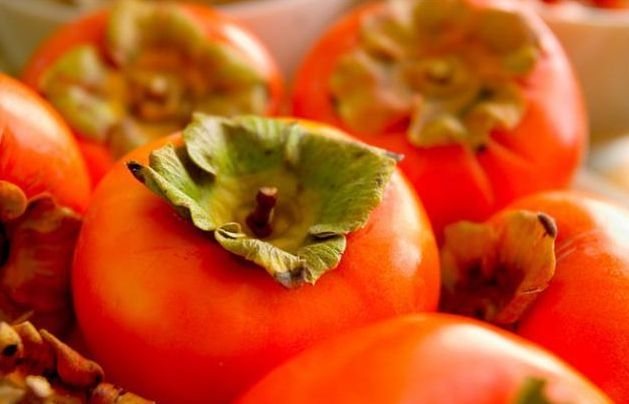
Benefit
Persimmon (the calorie content of the product for weight loss is sufficient and acceptable, which allows the fruit to be used as a tasty, dietary snack) is distinguished by a high content of various vitamins, macro- and microelements that contribute to the proper functioning of the body.
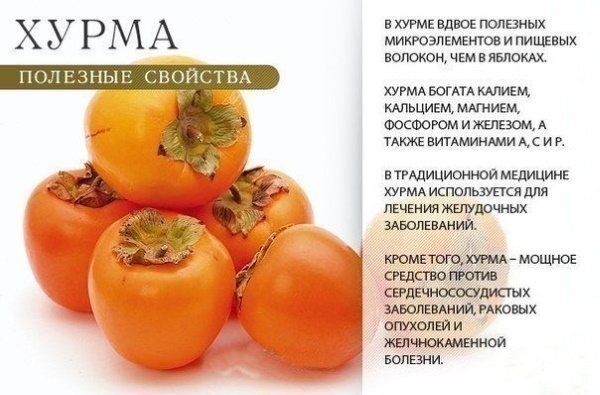
Nutrient content:
| Vitamins |
|
| Macronutrients |
|
| Microelements |
|
| Mono- and disaccharides |
|
Eating 2-3 fruits daily helps:
- due to the large amount of pectin, it has a gentle effect on the intestinal microflora, providing a bonding effect;
- improve blood condition and prevent iron deficiency anemia;
- tone the body and improve performance;
- normalize nervous activity and prevent the negative consequences of stress;
- nourish the heart muscle with potassium, preventing the occurrence of cardiovascular pathologies;
- replenish reserves of organic iodine, which is responsible for the normal functioning of the thyroid gland;
- due to the content of vitamins A, C and PP, protect cells from the effects of free radicals that provoke the development of oncological tumors;
- cleanse blood vessels and prevent the formation of cholesterol plaques;
- stabilize metabolic processes, promoting the rapid elimination of waste and toxic substances;
- prevent the formation of fossilized deposits and sand in the kidneys and gall bladder;
- improve visual function;
- activate cell regeneration processes.
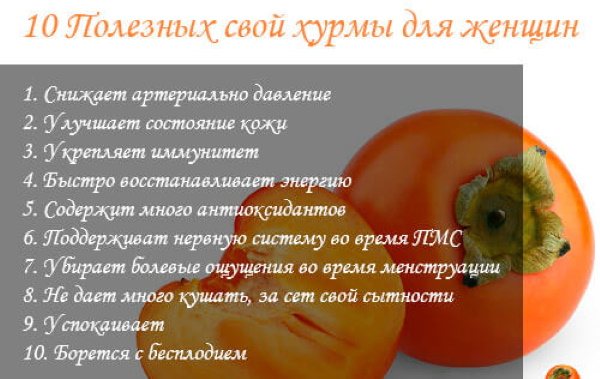
For coughs and colds, eating fresh persimmon helps boost immunity, and when rinsing the mouth with the infusion, it has a local antibacterial effect.
For men, regular consumption of persimmon helps cope with stressful situations and increased stress, as well as improve the condition of the excretory system and sexual function. A woman needs persimmon to regulate hormonal levels and reduce the severity of menopause symptoms.
Consumption of persimmon by pregnant women is recommended as:
- prophylactic against deficiency of iron, potassium, iodine and fluorine;
- assistance in creating a child’s bone skeleton;
- means that help remove toxic substances from the body and fight swelling;
- fruit that reduces the severity of toxicosis.
Persimmon applied to the skin has an anti-aging and nourishing effect, and also helps fight acne and flaking. You should eat persimmon 1-2 times a day, best in the daytime or evening. Consumption of the product on an empty stomach in the morning is not recommended due to the increased risk of constipation.
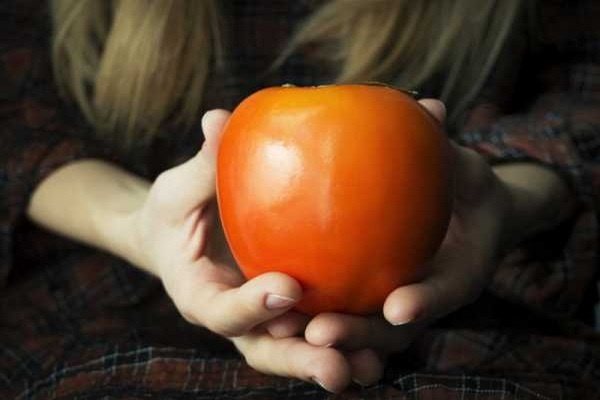
To remove viscosity, the fruits can be frozen for 2-3 hours, placed in boiled water for 10 hours, or pierced in several places with a needle previously placed in alcohol. Obese people are prohibited from eating persimmon before bed. You should not drink fruit with milk.
Beneficial features
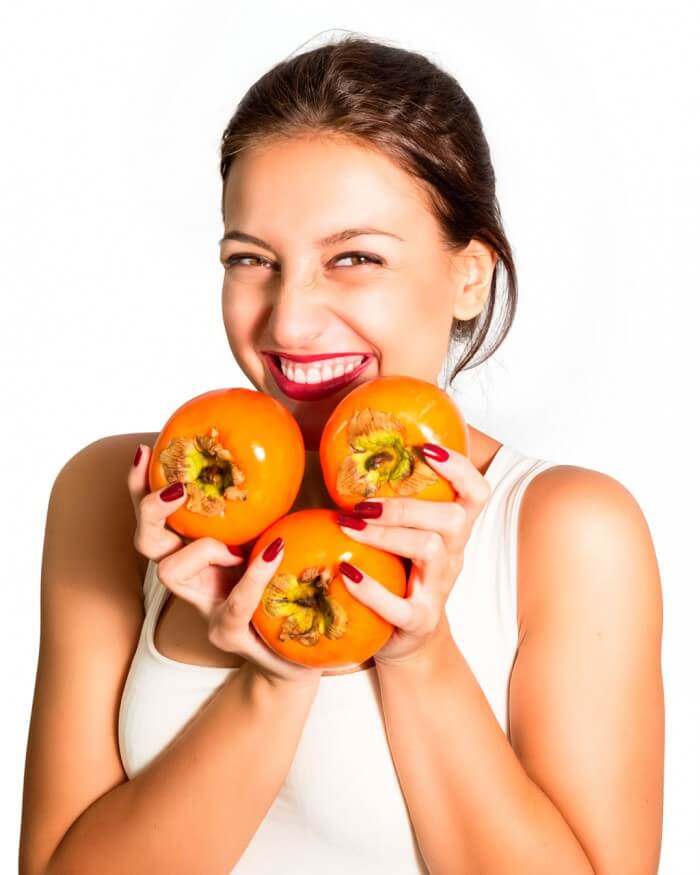
The nutritional components that make up persimmon have a beneficial effect on the entire human body:
- support the health of the nervous system, bones, teeth, skin, eyes;
- promote the production of red blood cells;
- strengthen the immune system;
- regulate glucose in the bloodstream;
- protect cell membranes from damage;
- slow down signs of aging;
- prevent various types of cancer;
- improve metabolism;
- reduce blood pressure;
- increase cognitive functions of the brain;
- improve digestion;
- contribute to the effective recovery of the body after illness.
Contraindications
Persimmon (calorie content for weight loss does not exceed acceptable standards, which allows the fruit to be included in a standard dietary diet that includes 1400 kcal) is very healthy in itself, but due to the high tannin content in the unripe fruit, it can stick together pieces of digested food, causing constipation and gastric obstruction.
This makes the fruit prohibited for persons suffering from:
- constipation;
- postoperative abdominal adhesions;
- intestinal atony.
For this reason, the fruit is prohibited from being included in the diet of nursing mothers and children under 10 years of age. Otherwise, the rapid occurrence of intestinal obstruction, caused by the incompatibility of the child’s imperfect intestines and tannin, is possible.
The hypoglycemic index of persimmon is 45-50 units, which classifies it as an average product that is not prohibited for people with diabetes, but a large amount of sucrose forces the consumption of the product to be limited to 1 piece. in Week.
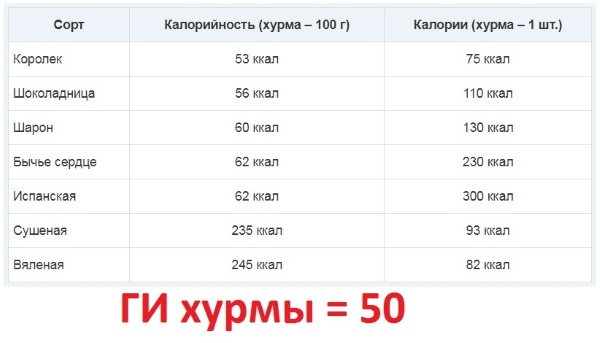
Due to its strong diuretic effect, persimmon is contraindicated for people suffering from kidney and urinary system diseases. You should not eat persimmon if you have an individual intolerance to the fruit.
Possible harm
Persimmon is contraindicated in the following cases:
- for acute inflammatory bowel pathologies with a patient’s tendency to constipation or diarrhea;
- in children under 3 years of age;
- during the recovery period after surgery on the gastrointestinal tract;
- in case of individual intolerance.
Persimmon can cause harm to the body if consumed incorrectly or if the daily allowance is exceeded.
If you have an excess amount of persimmon in your diet, you can gain weight from it. Overweight people should not consume more than 2 fruits per day.
Patients with diabetes are not recommended to consume more than 1 fruit per day, so as not to provoke a sharp rise in glucose levels. Despite the fact that there is more fructose in the composition than glucose, if consumed in excess, an increase in the indicator is inevitable.
Persimmon can have a fixing effect because it contains tannins. This happens when eating fruits in large quantities. The fruit weakens if you eat no more than 3 small fruits per day. In this case, the fiber and pectin content helps cleanse the intestines and normalize its functioning.
Menu for diet
Persimmon (the calorie content of a fruit when losing weight depends on the variety, but, as a rule, does not exceed 69 kcal) is saturated with pectin and fiber, which allows it to be considered an excellent dietary product.
A snack consisting of 2 fruits will quickly saturate the body and remove feelings of hunger. Based on persimmon, various mono-diets and fasting days have been created, allowing you to lose up to 1 kg per day and significantly reduce body volume. At the same time, and importantly, breast volume can often be maintained.
Fasting days
Based on the predominance of persimmon in the diet, it is possible to remove up to 5-7 kg over a period of 3 to 5 days. The daily diet of such food is very strict and consists of a certain set of products.
Depending on the composition, fasting days differ, consisting of:
- Persimmons and apples. With this diet, you should eat 1 kg of apples and persimmons per day, alternating the consumption of fruits with each other.
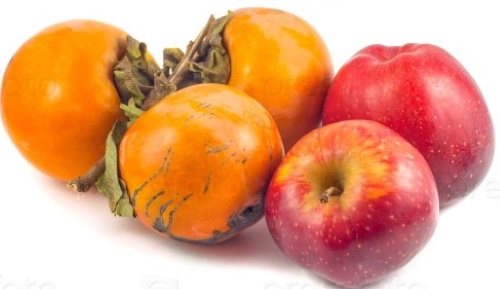
- Persimmon and kefir. Biokefir is consumed up to 1-1.5 liters per day. Supplements the diet with 4 persimmons.
- Persimmon and rice. A very strict diet, lasting at least 5-7 days. Requires a diet consisting of 5 meals, consisting exclusively of 500 grams. rice boiled in water and 1 persimmon.
In addition to these products, you should drink at least 1.5-2 liters per day. water or green tea.
Diet
A combination diet combines daily consumption of persimmons with low-calorie foods. The daily diet with this diet varies from 800 to 1500 kcal per day and is observed for a long time.
Diet rules:
- You are allowed to eat up to 4 persimmons. per day fresh, dried, dried or used as an additive in soups, casseroles and salads.
- The rest of the diet consists only of low-calorie foods, which include: lean meats, fish, poultry, bio-kefir and bio-yogurt, cereals, nuts, vegetables, fruits, eggs.
- Sugar, confectionery, carbonated drinks, alcohol and bakery products are completely removed from the diet.
- The daily drinking ration is at least 1.5-2 liters. water.
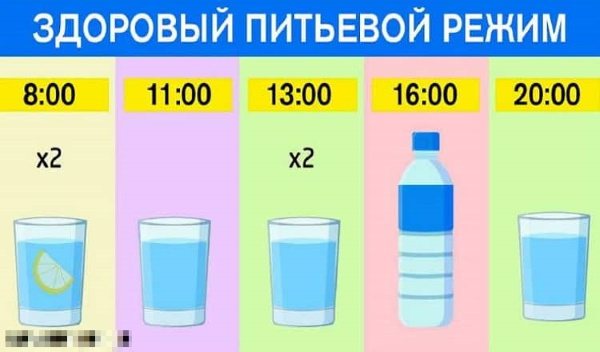
You should stick to this diet for 1 to 3 months.
Sample menu:
| 1st day | |
| Breakfast |
|
| Snack | persimmon |
| Dinner |
|
| Snack | orange |
| Dinner | low-fat cottage cheese with nuts and dried fruits |
| 2nd day | |
| Breakfast |
|
| Snack | persimmon |
| Dinner |
|
| Snack | apples |
| Dinner | baked fish with salad of cherry tomatoes, cucumbers and lettuce |
| 3rd day | |
| Breakfast | curd mass with bio-yogurt and nuts |
| Snack | orange |
| Dinner | steamed minced veal meatballs with rice and grated carrots |
| Snack | persimmon |
| Dinner | pureed persimmon with nuts and honey |
| 4th day | |
| Breakfast | protein steam omelette |
| Snack | persimmon |
| Dinner |
|
| Snack | plums |
| Dinner | salad of persimmon, chicken and feta cheese with sesame grains |
| 5th day | |
| Breakfast | rice casserole with bio-yogurt |
| Snack | persimmon |
| Dinner | soup with persimmon, veal meatballs and zucchini |
| Snack | apples |
| Dinner | fruit salad with persimmons, apples and pears |
| 6th day | |
| Breakfast |
|
| Snack | persimmon |
| Dinner |
|
| Snack | oranges |
| Dinner | Grilled vegetables with lemon juice |
| 7th day | |
| Breakfast |
|
| Snack | persimmon |
| Dinner | chicken pilaf with long grain rice |
| Snack | baked apples |
| Dinner | seafood with vegetable salad |
For faster weight loss, one of the main meals (for example, dinner) can be replaced by eating 1-2 pcs. persimmons
Ducan's diet
Popular 4-stage diet. During the first 2 cycles, eating any fruit is prohibited. During the 3rd day you are allowed to eat one persimmon, apple or 100 grams. strawberries
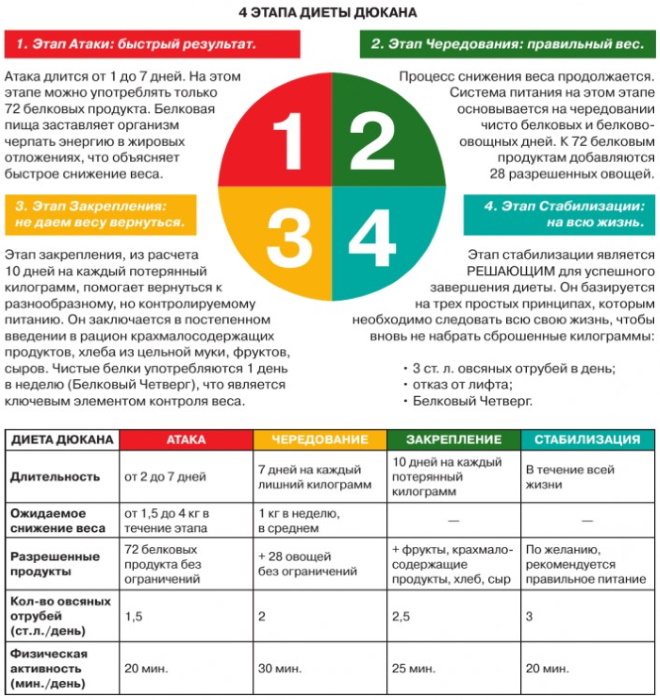
At the 4th stage, restrictions on the amount of fruit are lifted, but the doctor advises eating 2-3 pieces. persimmons until 2 o'clock in the afternoon.
Kremlin diet
Based on assigning a certain index to each product, the diet requires a daily food limit of 20 units. Persimmon, due to its sweetness and large amount of pectin and fiber, is assigned an index of 13, which allows you to optionally introduce it into the diet along with protein products (chicken, fish, veal).
The persimmon variety Korolek is distinguished by the greatest sweetness, appearing on the shelves in November-December.
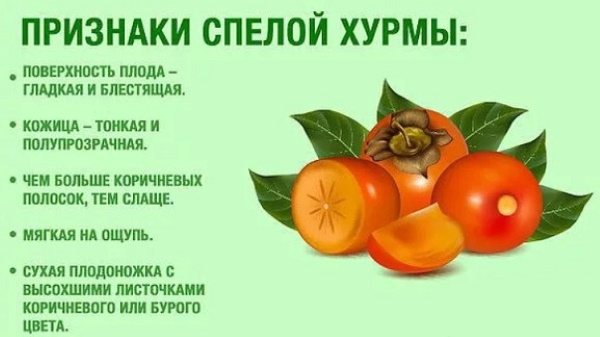
When purchased in a store or market, a ripe and non-astringent fruit has:
- Bright orange color. The light orange hue occurs only in unripe fruits.
- Thin, smooth skin, giving the fruit a resemblance to amber.
- Elasticity. A very dense persimmon is unripe, and excessive softness that falls apart in the hands is a sign of an overripe fruit.
- Dark color of peri-peduncle leaves. When picked up from a ripe fruit, the back of the amniotic leaf has a brown appearance. The unripe one is bright orange.
- Brown circular stripes located on the skin.
- A dried stalk, indicating that an already ripe fruit has been removed from the tree. Persimmons left to ripen are distinguished by a slightly greenish, not withered stalk. Such fruit may not be astringent, but its aroma is significantly inferior to the ripe one.
A distinctive feature of the Korolek variety is its chocolate-colored flesh and the presence of fully formed brown seeds. This sign appears after pollination and is responsible for the maturity and taste of the fruit.
You can't buy persimmons:
- having damage to the skin;
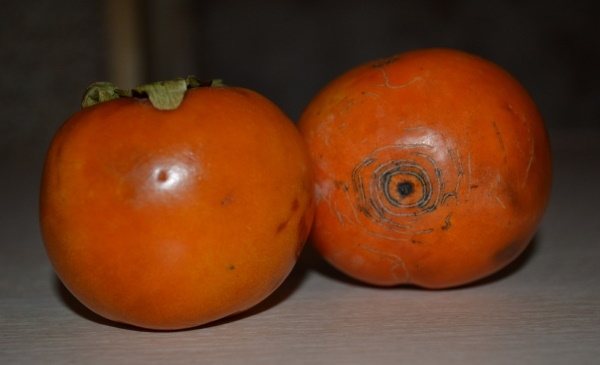
- characterized by the presence of dark, clearly defined spots, considered the first sign of rotting;
- very soft fruits that fall apart in the hands;
Such fruits lie beyond the established expiration date (1.5-4 months) or were brought in violation of transportation rules.
A newly purchased low-calorie product that is actively used for weight loss is stored:
- in the refrigerator for 3 days;
- at temperatures below 0 degrees Celsius and humidity 90% - 2-3 months;
- with quick freezing – 6 months. The same method will help get rid of viscosity.
If you use pantries or cellars to store persimmons, they should be constantly ventilated to avoid the appearance of putrefactive spots.
What can you cook
Chicken with persimmon
Ingredients:
- 400 g chicken fillet;
- 2 persimmons;
- 10% cream;
- vegetable oil;
- butter;
- Wheat flour;
- 1 onion;
- salt;
- dry parsley and dill;
- dry paprika.
Cooking method:
- Cut the chicken into small pieces.
- Cut the onion into thin half rings.
- Peel the fruit, remove the seeds, cut into medium pieces.
- Melt the butter in a frying pan, add vegetable oil and fry the onion in the resulting mixture.
- Add the chicken to the onion and fry until golden brown.
- Place persimmons in the pan with the chicken.
- In a separate dry frying pan, fry a small amount of flour until creamy.
- Pour in the cream until it almost covers everything, add flour, mix well so that there are no lumps.
- Season with salt, add paprika, herbs and simmer uncovered until the chicken is done.
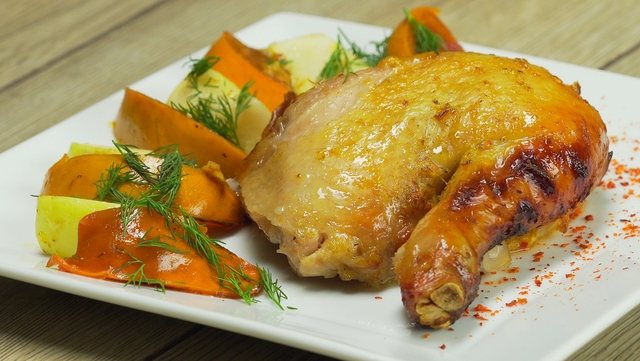
Persimmon cupcakes
Ingredients:
- 2 persimmons;
- a bag of vanilla sugar;
- a third of a glass of walnuts;
- 100 grams of sour cream;
- 100 g sugar;
- 140 g flour;
- 1 tsp. baking powder;
- 1 egg.
Cooking method:
- Fry the nuts in a dry frying pan and chop with a knife.
- Mix sour cream and sugar, add an egg, and also add a bag of vanilla sugar.
- Combine flour and baking powder, add flour to sour cream.
- Add nuts to everything and stir.
- Cut the persimmon pulp into small cubes.
- Place a small part of the persimmon into baking molds (if necessary, grease them with butter).
- Pour the dough on top, backing up a little from the top so that the cupcakes have room to rise.
- Place the treat in an oven preheated to 180°C for 30 minutes.
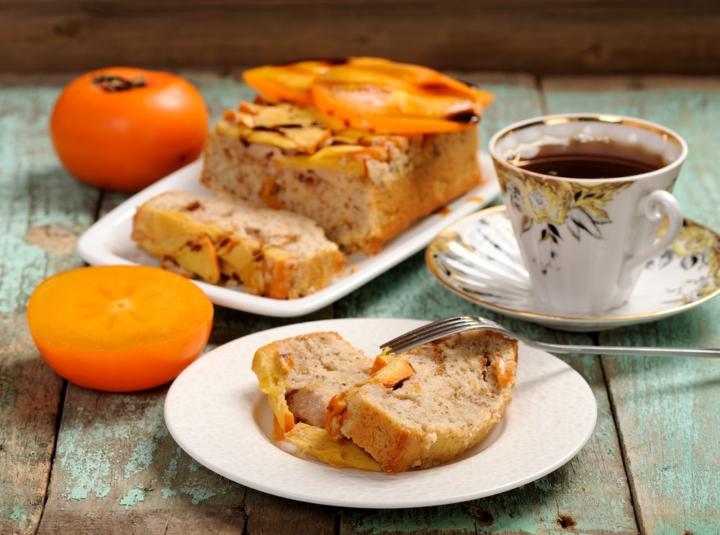
Persimmon sauce for meat dishes
Ingredients:
- 1 persimmon;
- vegetable oil;
- dry ground paprika;
- ground black pepper;
- 5 tsp. soy sauce;
- 1 onion;
- 2 tsp. fresh lemon juice;
- 1.5 cm piece of fresh ginger root.
Cooking method:
- Remove the skin from the product and chop the pulp as finely as possible.
- Finely chop the onion.
- Grate the ginger on a fine grater.
- Combine vegetable oil with paprika, ground black pepper, lemon juice, ginger and soy sauce.
- Add onions and persimmons to everything, mix well.
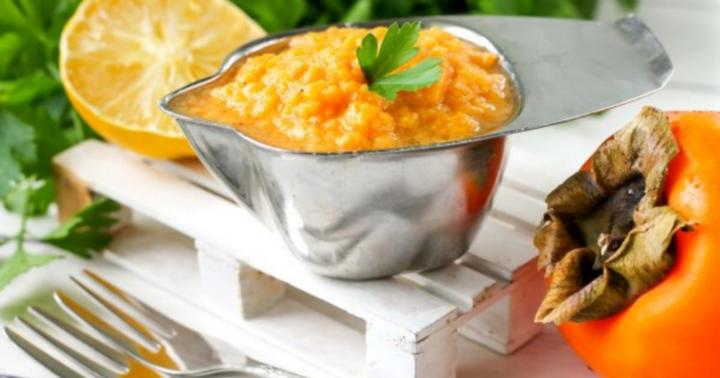
Persimmon in cosmetology
Persimmon is useful not only for internal organs, but also for the skin. The very consumption of fruits already has a positive effect on the quality and color of the skin. But if you want more effect, then use persimmon face masks.
To nourish and moisturize the skin, the pulp of one persimmon should be ground and applied to a previously cleansed face. After 10 minutes, wash off the mask with cool water. To tone the skin, the fruit pulp is mixed with cream, and to care for acne-prone skin and skin with enlarged pores, egg yolk is added to the pulp.
